Copywriting for Landing Pages Series
Part 1: Do these things before you write giveaway copy.
Part 2: How to tell a story with great headlines and an amazing call to action.
Part 3: Writing killer copy for giveaway landing pages.
This is part two of a 3 part series on copywriting for lead generation landing pages. Part one discussed the type of research you should do and questions to ask yourself before you start writing copy. You can read it here.
Part two gets more tactical. We’ll cover my own checklist of things to look out for when you are writing your landing page copy. There’s also a TON of real world practical examples to demonstrate these concepts.
Extra extra! Read all about it: Headlines and Subheadlines
Nothing is more important than the primary and secondary headlines on your landing page. This is where you grab their attention so take some time to get it right. What’s one sentence you can write that would engage your audience right away and get them to read more?
Go Bold
You’ll never stand out with a bland headline. Check out the bold headline and story below from Square.

They could have just said “A simple payment processing system made for businesses.” But that doesn’t stand out. It’s accurate, but bleh.
They didn’t just claim to work for “businesses” they claim to work for “EVERY Business”. Then they let you pick a type of business and work to tell a specific story for that business type to prove the big claim.
Tell a story with headlines
The top headline’s job is to pull someone into your landing page by getting them interested. Treat it like a cover to the book. The secondary headlines should tell a more complete story that speaks to your audience. If the rest of the text on your landing page was blurred out would I understand the value to me by just reading the headlines. Here is a great example, from dropbox, of a landing page that tells a story through headlines.
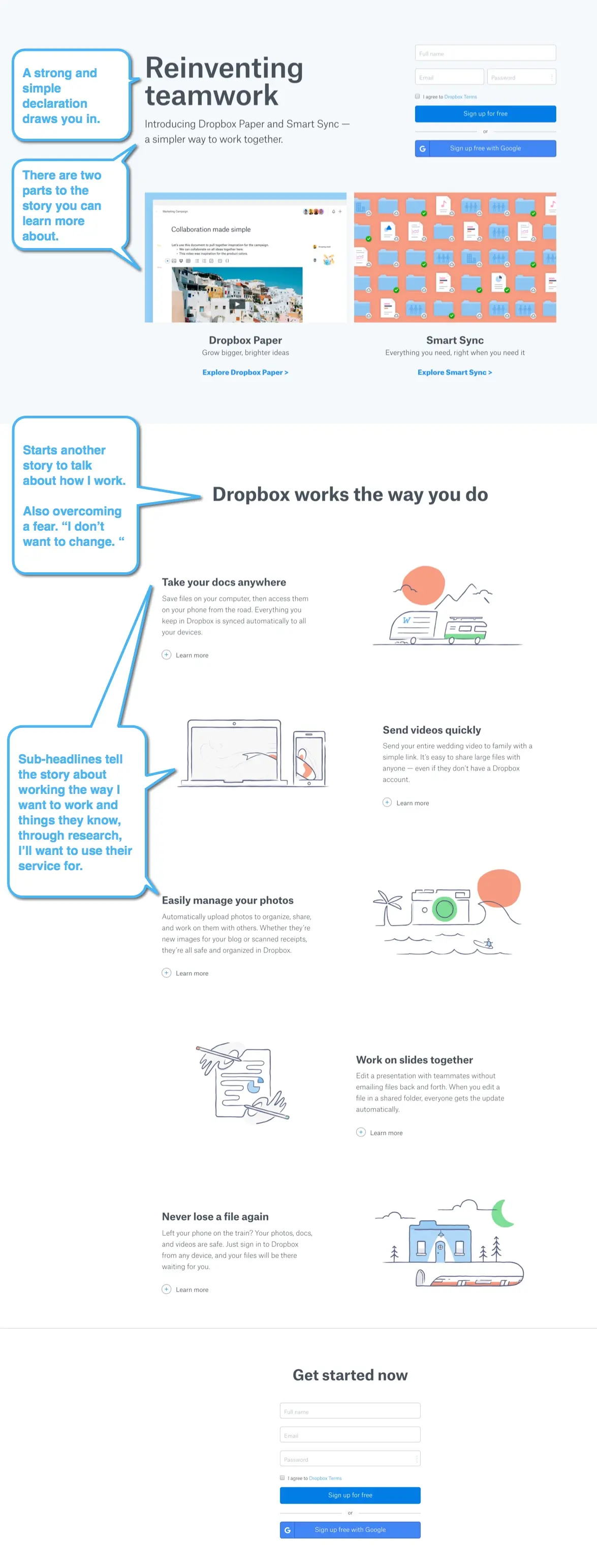
Something else to notice about these two examples so far… they keep the body text short as well. No more than 2-3 sentence paragraphs to back up the headlines. We’ll cover that more below.
Be specific. Avoid generalisms.
“It’s Easy!”
This is a terrible headline. It’s something that anyone would probably hope to write about their product. It doesn’t help tell YOUR story. It could be talking about anything. It requires the reader to read the text below to understand what makes your product easy. Let’s look at an alternative:
“The Simplest Contest Set Up – Anywhere”
Now you are taking a stand while telling a story about what your product does. The reader knows it’s about contests and that you believe you’ll be simpler to get started than any alternatives. That’s a good headline and a brand promise to potential customers.
Repetitive with a theme.
In the square example they repeat a strong theme over and over again. The sub-headlines are all about speed. Speed to get started. Speed to make your lines move faster. Speed to get paid. Speed to save time.
In the end you may not choose their solution, but you’d have a hard time leaving their page without knowing why they think they are right for your business.
Be aspirational with the customer benefit.
Check out the home page for “You Need A Budget”. It’s personal budgeting software that could be really boring, but they are telling a story to visitors as they envision themselves. With control over their money.

Don’t be afraid to rule people out with headlines.
It’s OK. Your product isn’t for everyone. The headlines should make it easy for people to know if it’s not for them.
Be educational.
Another strategy that “You Need a Budget” also employs is being educational. If you read the headlines you not only learn how they think about budgeting, but how you might want to think about budgeting.
If you are looking for a headline formula: SHINE
I love the story KissMetrics tells about making your headlines SHINE. Which stands for
- Specific – About your product and the intended customer.
- Helpful – To your customer. Will they learn something?
- Immediacy – Why should your customer take action now?
- Newsworthy – Was it bold? Is it a good story?
- Entertaining – Does it pique the visitors interest?
Write a great call to action with incentive!
A call to action generally combines a sub-headline, an optional form requesting information from the visitor, and a button that’s obvious. A great call to action is, first and foremost, easy to find and understand on your landing page.
Here are some rules for great calls to action:
- Make it discoverable. You should be able to step back 10’ from your computer and know where the call to action is.
- What do you do? It should be obvious to customers and noncustomers what you want them to do.
- Why should I take it? What’s in it for the visitor to take action. Will they get something for it? A free account? A demo? A lower price if done before a certain date? There needs to be something.
- Keep it simple. Nothing worse than a call to action that requires me to answer 10 questions. If you don’t need it right away then don’t demand it. Check out the Uber versus the Lyft call to action here:
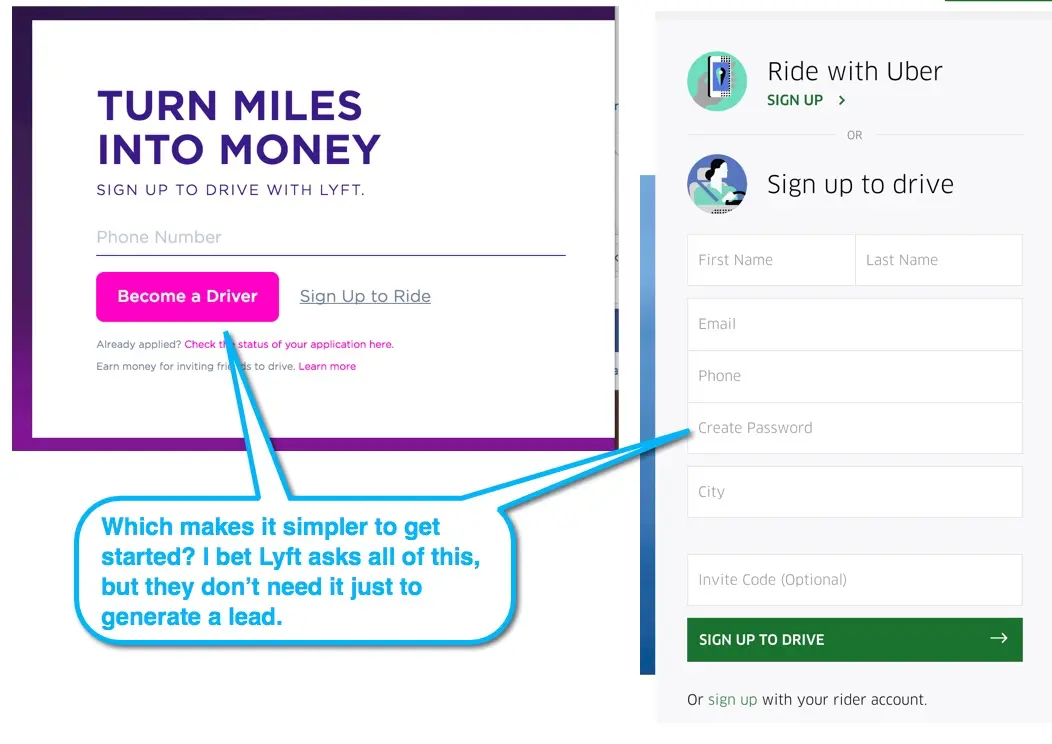
- Match call to action and button text. A call to action generally combines an incentive headline and button text. Do your best to make these match and be on brand. Like headlines… avoid being generic. Check out this example where the headline matches the button from SolPad.com

The Role of Images & Videos With Copy
Way too many businesses rely on images and videos to tell their story. One thing you’ll notice about all the examples above is that even if they linked to a video and had images… you understood the story WITHOUT having to see or view them. The multi-media is only complimentary.
I know what you are saying… “I thought an image was worth a thousand words.”
It’s not.
Your words are worth thousands of dollars to your business, but the images and videos are just complimentary to your story.
Businesses probably focus too much on the multimedia aspects because they paid thousands of dollars for their product video and intricately designed imagery. That’s great if you have the disposable income. It may help tell your story. Unless you are selling a blockbuster summer movie a video IS NOT required to get people to take action.
Microcopy – Two to three sentences in support of your headlines
I’m talking about the body text on your landing page. This is the copy that’s generally below sub-headlines and forms the meat of the character count. While I want to stress that this copy can make a difference… it won’t make nearly the difference changing out the main headlines and story will on your landing pages.
This copy exists simply to support those headlines and add additional details for the person who is engaged enough that they want to learn more. See an example here:
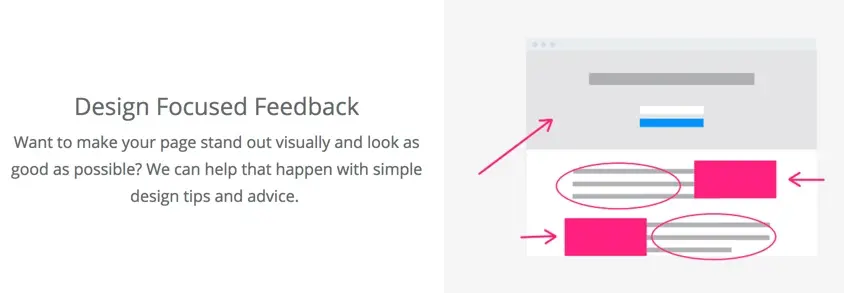
There are two sentences and an image there that support the headline above the text. You’ll see examples like this on the page above from Square as well.
- Support the primary headlines with answers, details, or proof statements that add clarification.
- 2-3 sentences that are easy to read with a larger than average font size.
- Don’t write novels on each point. It will make the page look like a wall of text.
- Keep it at an 8th grade reading level. You don’t need $100 vocabulary words on landing pages.
Don’t forget the social proof.
People are scared to go first. No one wants to feel like a guinea pig. My rule for social proof, however, is similar to images and videos. It’s complimentary. Good social proof helps to build trust with the visitor by letting them know that they are not alone, the problem is worth solving, and giving them someone to identify with.
Some of the best testimonials will address an objection or multiple objections. For example, the testimonial can stress: durability, price, quality, speed, customer support, popularity, and more.
There are several different kinds of social proof to consider adding to your landing pages:
Personal Testimonials help people identify
Testimonials are great “proofs” to demonstrate to your visitor just how great your product or service is by how well they served someone that sounds just like them. A quote that says “I had this problem and this company did an amazing job of providing a solution that wildly exceeded my expectations”.
For example:

Or even quotes from Twitter customers:
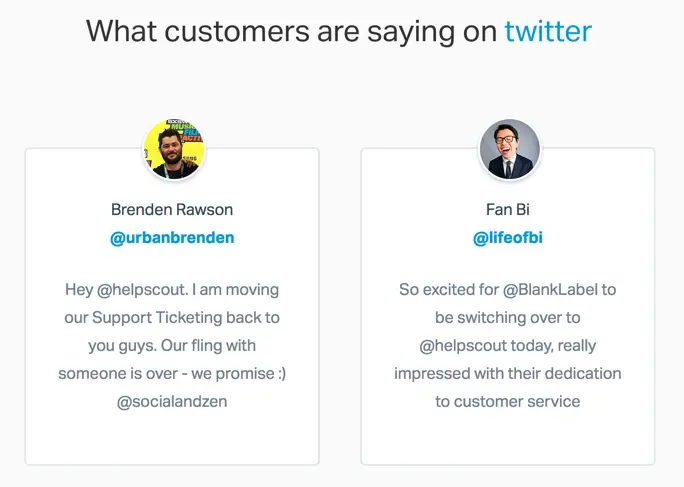
Numerical testimonials can make visitors feel safer.
A numerical testimonial highlights some numbers to show that someone making a purchase wouldn’t be alone. Saying, for example, that you’ve already helped 170 people accomplish something is a powerful way to convince everyone that your solution can work for them as well. See how it’s done here:

Press worth mentioning
Do you have any press coverage that’s worth mentioning? This can make a visitor feel your solution is more real. Any public reviews or mentions can be powerful and you don’t even need to quote them. Just listing off reputable sources that have covered your product or technology can put visitors at ease.
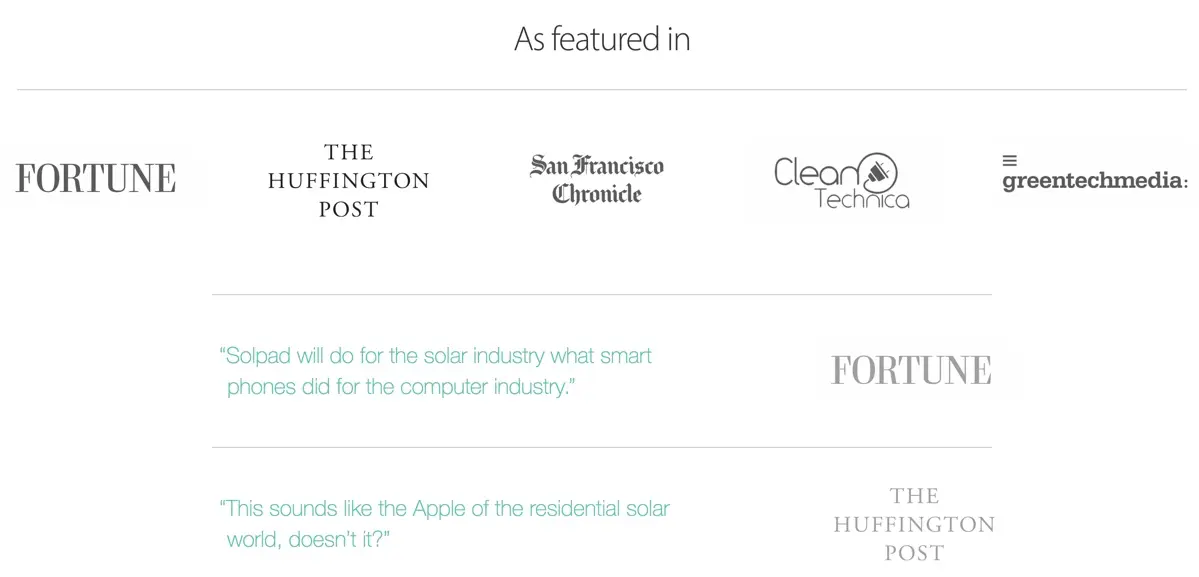
No social proof yet?
If you are in a private beta you may want to reach out to beta customers for some early praise you can use to promote your launch in the form of a personal testimonial.
However if you don’t even have a beta yet you could still “cheat” by using industry quotes to steer your visitor in the right direction.
For example: If you are building a platform for solar energy then you could quote larger new outlets that talk about “Solar energy poised to grow 40% over the next year.”. It doesn’t mention your specific product, but helps people understand your solution could help solve big or important problems.
You could also start touting the number of people you have signed up so far. Check out this example:
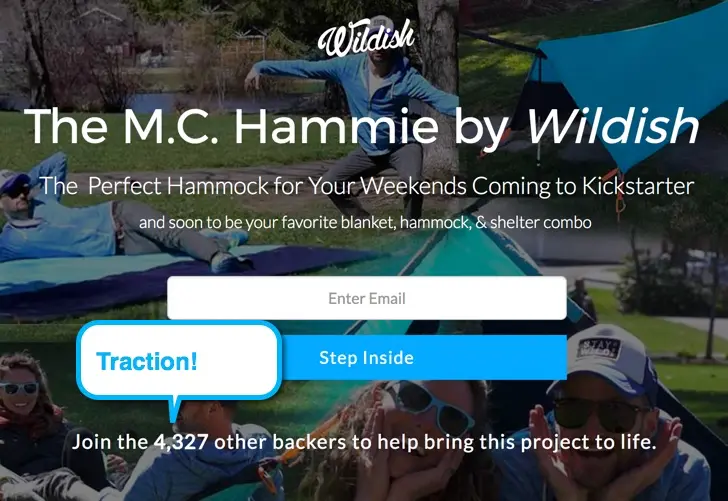
The TLDR Version
- Spend the most time on creating bold headlines that tell a compelling story when skimmed without the rest of your copy.
- Create an obvious call to action that’s a no brainer for people to take you up on.
- Don’t rely on videos or images. They should only complement the story.
- Don’t write a novel. Minimize even the details down into easily digestible bits.
- Everyone can and should have some form of social proof.
That’s all for now. Check back next week and we’ll go over some specific copywriting rules for email responders, contest pages, and more!